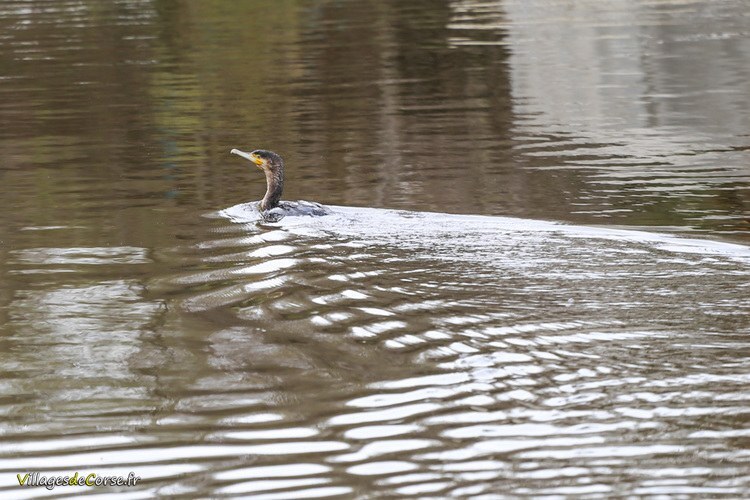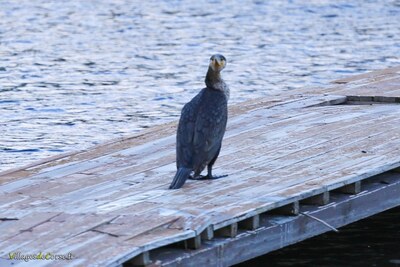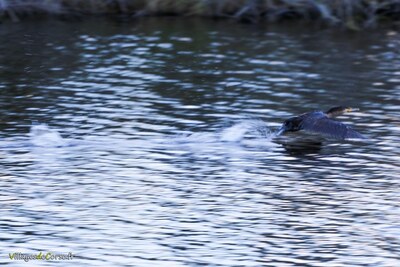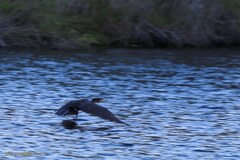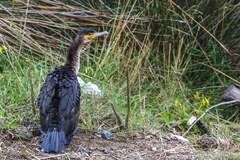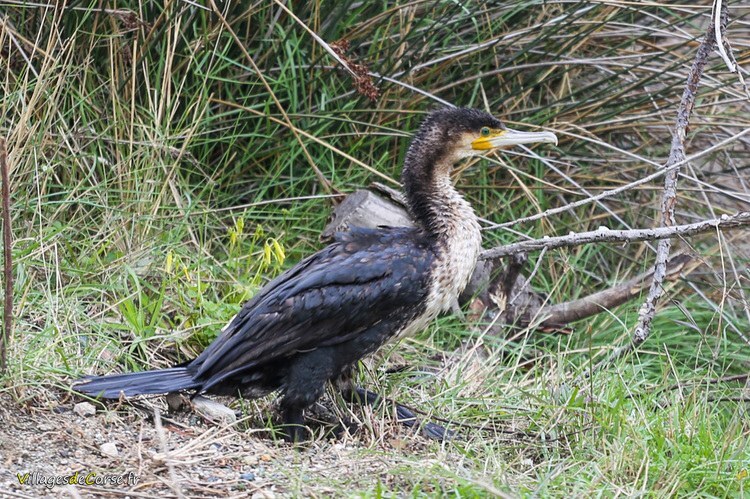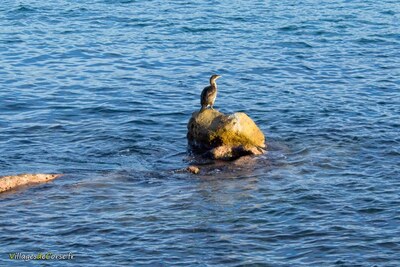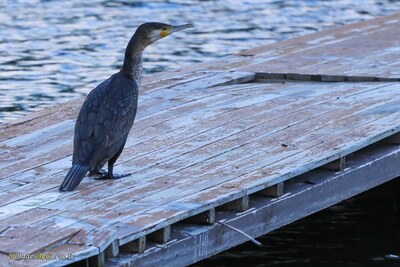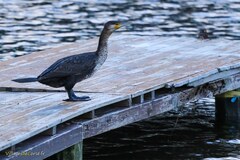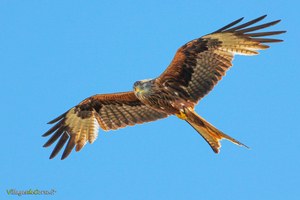- Articles
- Fauna and Flora
- Birds
- Great cormorant
Great white-breasted cormorant
Great Cormorant or White-breasted Cormorant
The cormorant is a bird of the Phalacrocoracidae family. Its name derives from a juxtaposition of two ancient words: corp (crow) and mareng (sailor), so that its first spelling was cormareng in the 12th century. Thirty-six species have been recorded and are found on every continent of the globe. In France and Western Europe, the Great Cormorant - Phalacrocorax carbo - is the most common. The White-breasted Cormorant - Phalacrocorax lucidus - seen in Corsica is considered a subfamily of the Great Cormorant, which is all black. In some classifications, the two are confused because of their similarity. The species is protected, except in cases of derogation for nuisance.
Cormorant characteristics
The Great Cormorant averages 90 cm in height - reaching up to 1 meter - and weighs an average of 3 kg. Its wingspan is around 150 cm. Its black coat ends in a small fan-shaped tail. It has a long white beak with a yellow base, ending in a small hook. Its eyes are between blue and crystalline green.
Habitat of the Great Cormorant
Preferring temperate to cold climates, the Great Cormorant lives in coastal regions and along rivers near river mouths and undergrowth. It can also be found around large lakes and ponds. It's a seabird that doesn't venture out to sea. At night, it perches in trees, which are also where it nests.
Breeding and nesting
The cormorant can lay from 1 to 6 eggs, with incubation lasting one month. Nests are generally built high up in trees, using branches. Living in pairs, both parents feed the chicks at hatching.
The average life span of a cormorant is around 15 years, and can exceed 20 years.
Diet
A fish-eating bird, the Great Cormorant feeds mainly on sea or river fish, but may also eat amphibians.
It's an aquatic bird, built to dive, but first landing on the water. Its webbed feet enable it to swim on the surface as well as underwater, where it can - without momentum - descend up to 30 meters for one or two minutes. Its long hooked beak at the tip enables it to swallow the fish it seizes.
It often flies low over the water, alternating between flapping its wings and gliding. One of its particularities is to land on a rock in the wind and open its wings to dry, as its plumage is not entirely permeable.
Cormorant in Corsica
The Great Cormorant is found in both Haute-Corse and Corse du Sud, in gulfs and river mouths. It is sedentary on the island, but not in northern Europe, classifying it as partially migratory. It is more easily observed out of season, perhaps for fear of man.
